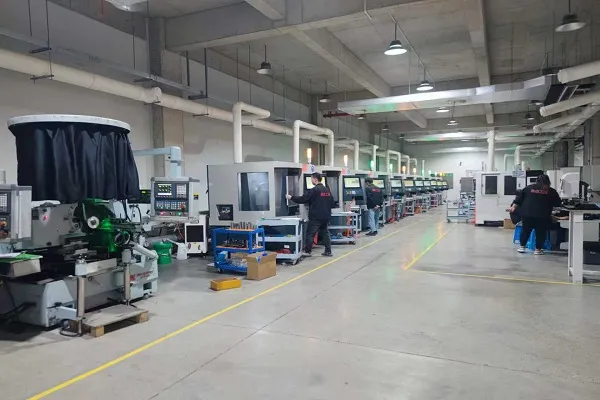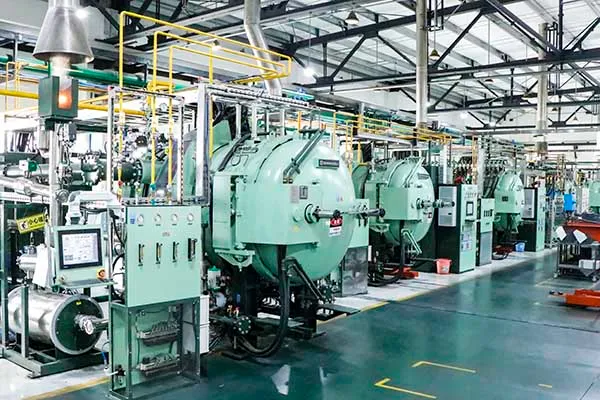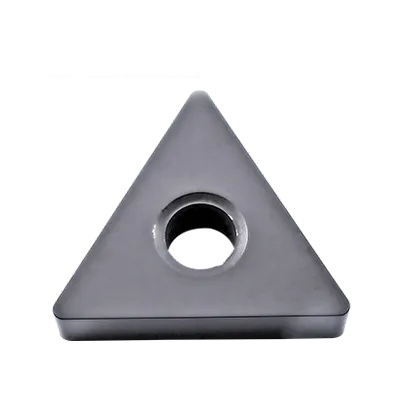

Insert TNMA
TNMA insert angle: 60°Triangle carbide insert; 0° Negative Rake Insert and double-sided no chipbreaker;
Breaker Application: cast iron machining;
TCMA insert inscribed circle (IC) of 9.525mm/12.7mm, thickness of 4.76mm, and corner (nose) radius of 0.4mm/0.8mm/1.2mm/1.6mm;
Matching TNMA insert Tool Holder: PTFNR/L,PTTNR/L,PTGNR/L,MTGNR/L,MTJNR/L,MTFNR/L;
TNMA Insert can deal with multiple operations by combining different grades;
Matériau : carbure de tungstène ;
Product Introduction
TNMA insert is a triangular 60° angle without chipbreaker specially designed for hard material machining, mainly used in cast iron machining, with good triangular stability, the negative type insert can effectively utilise 6 cutting edges, economical and efficient.
TNMA insert Specification
TNMA Designation
- T : Triangular shape.
- N : Negative rake angle (provides stronger cutting edge).
- M : Tolerance class (indicates precision of inscribed circle and thickness). Typically +/- 0.13mm.
- A: With cylindrical hole, without chipbreaker.
Common TNMA Dimensions
Similar to TCMT inserts, TNMA inserts use numbers to signify size:
TNMA 33X:
- Cercle inscrit (IC) : 0,375″ (3/8″)
- Épaisseur : 0,125″ (1/8″)
- X represents nose radius in sixteenths of an inch (e.g., 1 = 1/32″)
TNMA 43X:
- Cercle inscrit (IC) : 0,5″ (1/2″)
- Épaisseur : 0,188″ (3/16″)
- X represents nose radius
TNMA insert holder

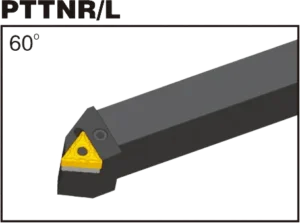


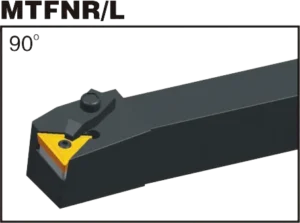
MTJNR/L

TNMA carbide Insert Dimensions (ISO and ANSI)
| ISO TYPE | ANSI TYPE | LE | IC | S | DI | RE |
|---|---|---|---|---|---|---|
| TNMA160404 | TNMA 331 | 16.5 | 9.525 | 4.76 | 3.81 | 0.4 |
| TNMA160408 | TNMG332 | 16.5 | 9.525 | 4.76 | 3.81 | 0.8 |
| TNMA160412 | TNMG 333 | 16.5 | 9.525 | 4.76 | 3.81 | 1.2 |
| TNMA220408 | TNMG432 | 22 | 12.7 | 4.76 | 5.16 | 0.8 |
| TNMA220412 | TNMG433 | 22 | 12.7 | 4.76 | 5.16 | 1.2 |
| TNMA220416 | TNMG434 | 22 | 12.7 | 4.76 | 5.16 | 1.6 |
Example: TNMA 432
- T : Triangulaire
- N : Angle de coupe négatif
- M : Classe de tolérance
- A: Angle inclus de 60°
- 4 : Cercle inscrit de 0,5″ (1/2″)
- 3 : Épaisseur de 0,188″ (3/16″)
- 2 : Rayon de nez de 0,0625″ (1/16″) – bon pour les travaux à usage général
The Science Behind Carbide Inserts: How They're Made and Why They're So Strong
Les plaquettes en carbure comptent parmi les outils de coupe les plus polyvalents et les plus durables disponibles. Mais comment sont-ils fabriqués ? Et qu’est-ce qui les rend si forts ? Dans cette vidéo, nous explorerons la science derrière les plaquettes en carbure, des propriétés du carbure de tungstène au processus de fabrication.
Notre capacité de production

